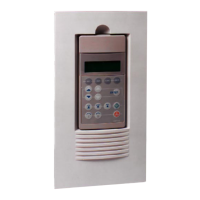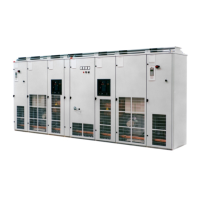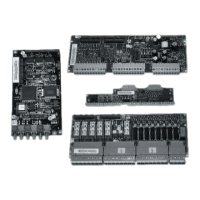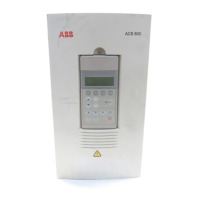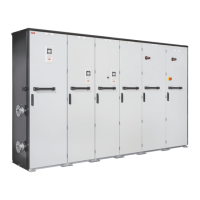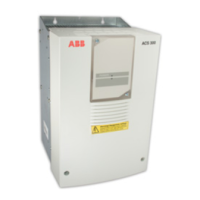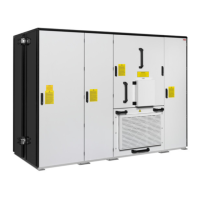2.6 Options for the drive
Line reactors
for armature-circuit supply
When power converters are operated with thyr-
istors, the line voltage is short-circuited during
commutation from one thyristor to the next. This
operation causes voltage dips in the mains. For
the connection of a power converter system to
the mains, a decision is made between the
following configurations:
Configuration A
When using the power converter, a
minimum of 1% impedance is re-
quired to ensure proper perform-
ance of the snubber circuit. A line
reactor can be used to meet this
minimum impedance requirement.
The value must therefore not drop
below 1% u
k
(relative impedance
voltage). It should not exceed 10%
u
k
, due to considerable voltage drops which
would then occur.
Configuration B
If special requirements have to be
met at the connecting point, differ-
ent criteria must be applied for
selecting a line reactor. These re-
quirements are most often defined
as a voltage dip in percent of the
nominal supply voltage.
The combined impedance of Z
Line
and Z
LR
constitute the total series
impedance of the installation. The
ratio between the line impedance and the line
reactor impedance determines the voltage dip at
the connecting point.
9ROWDJH GLS
=
==
/LQH
/LQH /5
=
+
*100%
Example:
Maximum allowable voltage dip is 20% at the
power converter's connecting point. Above equa-
tion used and simplified to:
==
/5 /LQH
=
4*
(1)
Since the line impedance is seldom known (it can
be determined by means of a measuring routine),
and the short-circuit power at the same point is
more frequently available, the line reactor can be
calculated by means of this value.
Assumption:
The system short-circuit power at
the power converters connecting point is 180
times the power converters rated power.
The systems relative impedance voltage u
k
can
thus be determined:
X
N/LQH
==
1
180
100% 055%*.
In accordance with equation (1), the following
applies for the line reactor:
X8
N/5 ./LQH
==422%*.
Since the line reactor has to be sized specific to
a power converter , the relative variable U
k
must be converted into an absolute value. For
this purpose, the following equation applies:
X
,I/
8
N
G1 1 /5
1
=
*****
2
3
32
π
I
dN
: rated direct current
f
N
: rated frequency of the system
U
N
: rated line voltage
L
LR
: line reactor inductance
Configuration C
In the case of high power converter
outputs or high currents, a power
converter transformer must fre-
quently be used for voltage match-
ing. If an autotransformer is used
for this purpose, a commutating
reactor must additionally be used if
special conditions must be com-
plied with as per Configuration B,
the reason for this being that the u
k
of commonly used autotransform-
ers is generally too small. If you do not have to
allow for special conditions of this kind, you must
nevertheless check whether the u
k
of the au-
totransformer concerned is sufficient for satisfy-
ing Configuration A.
Connecting
point
Line
L
Line
L
LR
Connecting
point
Line
u
k
LR
ca. 1%
Connecting
point
Line
L
LR
II F 2-15

